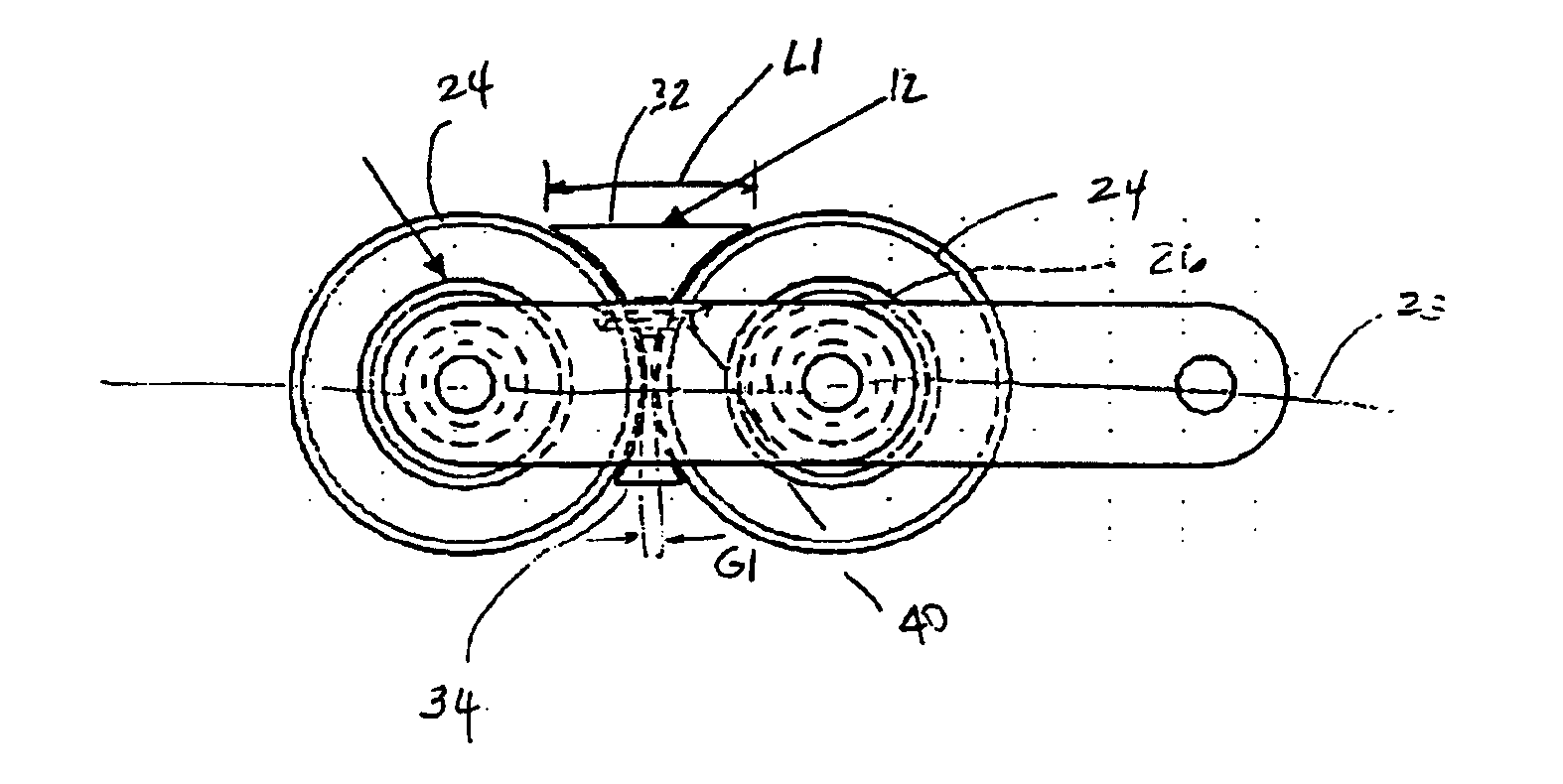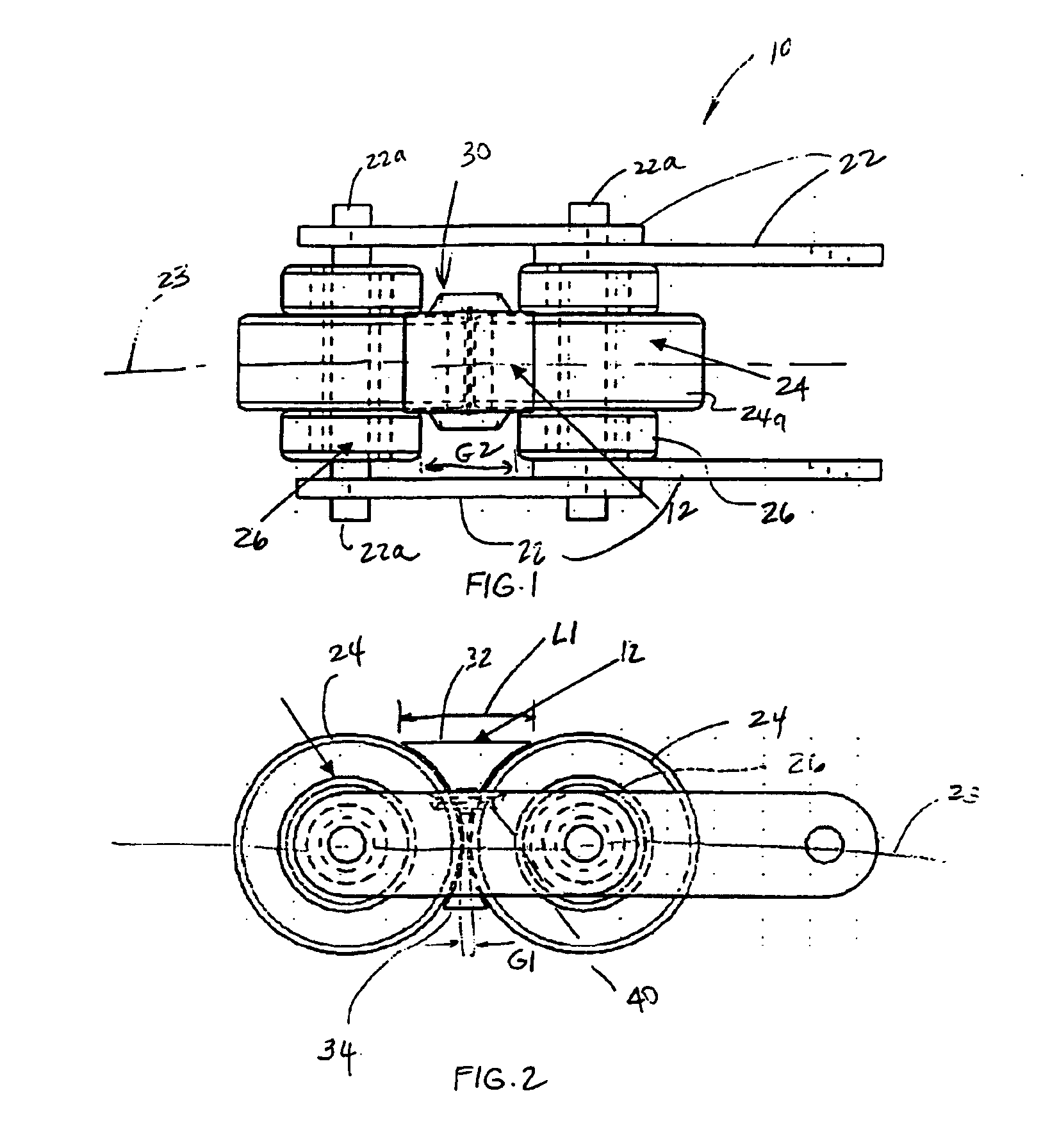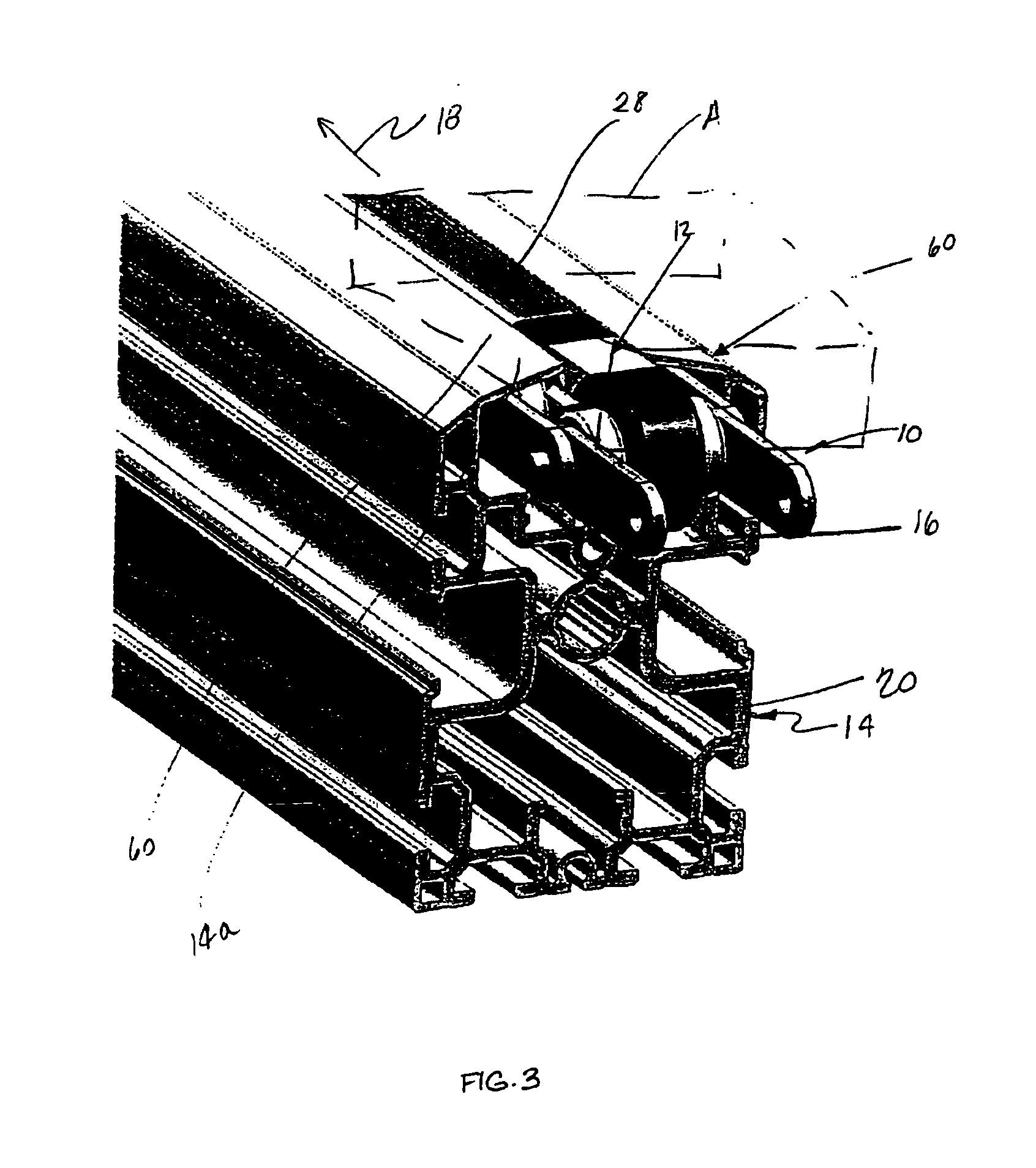Chain conveyor and clip
a chain conveyor and clip technology, applied in the field of chain conveyors, can solve the problems of affecting affecting the operation affecting the safety of the chain conveyor, so as to reduce the chance of the clip being ejected and the impact of the flexibility of the chain conveyor is minimal
- Summary
- Abstract
- Description
- Claims
- Application Information
AI Technical Summary
Benefits of technology
Problems solved by technology
Method used
Image
Examples
Embodiment Construction
[0029]Referring to FIGS. 1-7, the numeral 10 generally designates a chain conveyor of the present invention. As will be more fully described below, chain conveyor 10 incorporates a plurality of clips 12 that reduces the risk of small items from being caught or trapped in the chain conveyor while minimizing the impact on the flexibility of chain conveyor 10. As best understood from FIG. 3, chain conveyor 10 is typically extended through an extruded member 14 and, more particularly, extended through an upper run 16 of extruded member 14 for conveying an article A along a conveying axis 18 using load rollers 24, described more fully below. Chain conveyor 10 preferably forms a closed loop within extruded member 14 and on its return path extends through lower run 20 to form the closed loop through extruded member 14. As would be understood by those skilled in the art, chain conveyor 10 is driven by a sprocket drive assembly (not shown).
[0030]As best seen in FIGS. 1 and 2, chain conveyor ...
PUM
 Login to View More
Login to View More Abstract
Description
Claims
Application Information
 Login to View More
Login to View More - R&D
- Intellectual Property
- Life Sciences
- Materials
- Tech Scout
- Unparalleled Data Quality
- Higher Quality Content
- 60% Fewer Hallucinations
Browse by: Latest US Patents, China's latest patents, Technical Efficacy Thesaurus, Application Domain, Technology Topic, Popular Technical Reports.
© 2025 PatSnap. All rights reserved.Legal|Privacy policy|Modern Slavery Act Transparency Statement|Sitemap|About US| Contact US: help@patsnap.com



